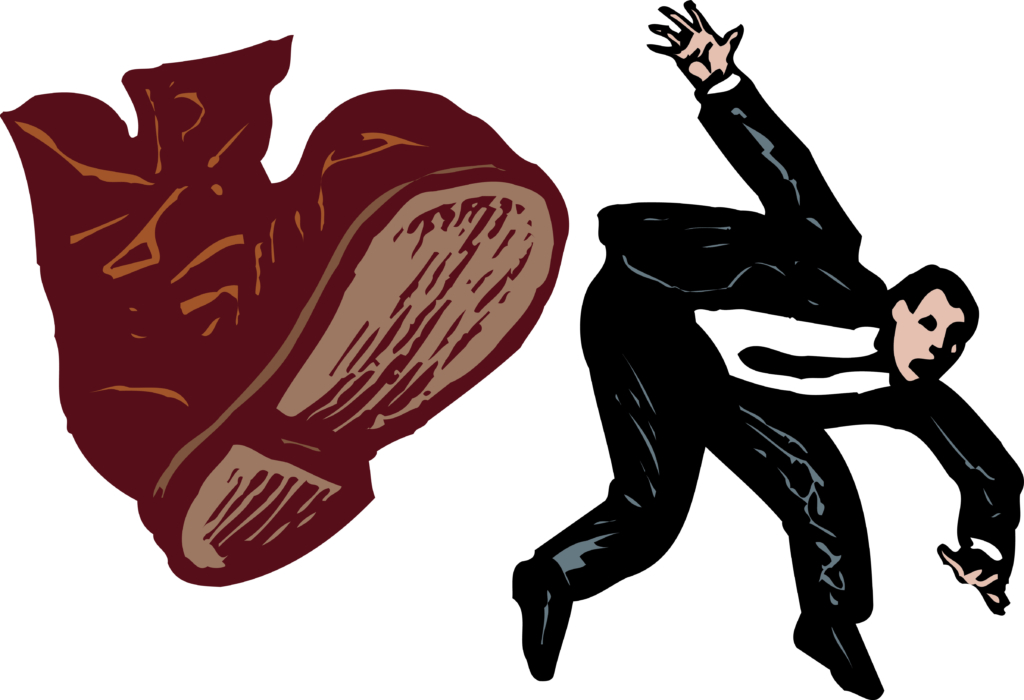
At the grocery store I shop at, there’s this gigantic lot with tons of parking spots, including the usual prime real estate reserved for the handicapped. You know the spots I’m talking about, the ones that always seem to be empty…or occupied by expensive convertibles that are far too low to the ground for an actual handicapped person to get in and out of.
They are the parking spots that first tantalize you by being there, big and empty right up by the front door of the store; but then rip your heart out once you start nosing into them and see the faded blue box on the pavement that screams “Gotcha!” followed by a maniacal laugh.
When I was younger I would often times consider saying “Fuck it, I’m parking here. That Mercedes and its obnoxious, self-centered owner is parked right there in one, so why shouldn’t me and my vintage Honda Civic get the same privilege?”
I’ll drag one foot behind me, walk real slow, and lunge myself forward with my arms swinging wildly.
But then I’d remember that the owner of the Mercedes could afford the $500 ticket, whereas I couldn’t afford the threat of a $500 ticket. Five hundred bucks was more than my car was worth and I didn’t want it to get impounded because, well it actually ran, and I needed to get around. So I never did.
But never once was the possibility of parking in a handicapped spot deterred by the fact that if I did park there I would be taking away a space that an actual handicapped person might need. Sure, having space for a paraplegic to unload a wheelchair or providing proximity for a 90-year-old great grandmother to drag herself into the store to fill her prescription was a possibility, “but there’s plenty of empty spaces to go around” I would have argued with the cop.
Especially at Walmart.
Not only is the parking lot of every Walmart in America the most likely place in America to squish your heel into a half-eaten hamburger as you step out of your car, but it’s also the most likely place to find an entire acre of handicapped spots.
“You guys ever run out?” I asked the guy collecting carts.
“Run out? Sure. Sometimes around Christmas time there’s none left,” he said. “But we just pull out the really broken ones from storage.”
True that my question was somewhat vague and could have been referencing shopping carts and not parking spots. But I decide a follow up is not necessary.
“Never mind.”
The other thing about Walmart that is really amazing is those couple of extra-awesome spots that are perpendicular to all the others. It doesn’t matter what city you’re in, there they are, pointing the opposite direction of all the other spots, just crying out for attention.
Oddly, they seem to attract an unusual amount of flashy cars with spinning 19s and totally legit handicap parking passes dangling from their rear view mirrors. (My very first trip to Walmart after writing this reconfirmed it. Sure as shit, a red convertible Camaro with a buff twenty-something guy walking with strength, dexterity and nimbleness, boldly parked there without an ounce of hesitation or remorse. It’s as if that spot was his God given right. What God should give him is my old Honda.)
Don’t get me wrong, I don’t mind all those spots being there, and I get it. They are quite necessary, and once you are in Walmart and look around, it’s understandable. The place has more “limited mobility” persons meandering around on those motorized shopping scooters than any other place I’ve ever seen. It’s virtually a bumper car ride if you are there during rush hour.
I do find it a bit ironic that many of those limited mobility persons appear to be the way they are because they don’t get enough exercise. With that being said, maybe there should be a whole new category of parking spots created with them in mind. The politically correct name would be Limited Mobility Parking, or LiMP for short. Instead of being up front, as close to the oh-so-tempting McDonald’s as possible, LiMP spots would an acre at the far end of the parking lot alongside the cars of owners who take car ownership too serious, parking diagonal across two spots 100 yards from any other car in order to protect their paint job. LiMPs could drag their legs and swing their arms for real…and the trek would do them some good.
That would leave me with a medium-range spot, which is just fine. I don’t mind the exercise. My sagging, middle aged body wouldn’t mind either.
My wife on the other hand…
“Wait, there’s a closer spot over there!” she says every single time we pull into any parking lot no matter what city, state or country we are in.
I’m thinking, “Wow, that’s like 12, maybe 15 feet closer than the spot I’m already fully committed to and all I have to do is back out, swing around again, dodge the myriad of LiMP scooters zig-zagging the lot, and then probably lose both spots in order to save those four precious steps.
“Okay,” I dutifully say as I back out.
As much pride as I must swallow in order to admit it on this page, sometimes she’s actually right. Especially in the summer when a shaded spot or the direction you park your car dictates the degree of misery you must suffer upon returning to a car baking in the Las Vegas sun.
I’ll never admit it directly to her, especially after I huff and puff and rant on about how she’s always telling me where to park. That would take the air out of my favorite counter move…the one where I slam on the brakes, fling off my seatbelt, and tell her to drive if she’s so good at picking out parking spots. That would just be wrong. It’s my favorite move.
It’s not just my wife that makes parking difficult either. If you go to the wrong kind of store – one that carries an altruistic front, like my local bike shop for instance – it’s nearly impossible to park your damn car. The first couple of spots are for the abundant number of handicapped people shopping at the bike shop at any given moment.
The next three are for hybrid or electric vehicles. The next ones down after that are for carpools. And then there’s another four for motorcycles and motor scooters. I was halfway expecting to find spots reserved for skateboards and roller blades, but then I realized you could take those with you and they don’t need a spot. By the time I worked my way down the line of spots I wasn’t allowed to park my SUV in, I was half way home. I should have just walked. Or ridden my bike if the tires weren’t flat.
Later, back at my office, which happens to be a LEED Certified building that adheres to mountains of environmental guidelines- all written and stored on paper culled from now deceased trees that have left behind a muddy bog somewhere in the Amazon mind you – I pull into a “Hyrbrid Only” spot and don’t give a crap that I’m breaking the rules.
This time, screw it, I’m going to go for it. For real.
Using the kind of rationalization that earned me no notoriety whatsoever in both my ninth grade and college sophomore speech classes, I convince myself that my SUV is in fact a hybrid.
“It’s half station wagon, half truck,” I say loud enough for others around me to hear if my windows were rolled down, while attempting to flash a menacing yet intelligent look that I somehow created on the spot to fit the phrase and complete the communication objective that only I received.
I further rationalize that the electricity that is used to power “green” cars is largely generated by fossil fuels, not much different than the gas I’m burning in my SUV, and I suddenly don’t even feel like I’m breaking any rules at all.
Hybrid owners are just taking advantage of their moment in the sun to steal all the good parking spots and I’m not playing that game any more.
Plus I know that I can’t get a ticket and the threat of getting a ticket doesn’t bother me any more, even though there is no threat. I’m on private property and “Hybrid Only,” “Expectant Mothers,” “Dine Out,” “Employee of the Month,” and any other such proclamations are really only suggestions, not laws. The only risk is the scorn of an expectant mother who thinks she and her unborn deserve an up-front spot more than I do. An employee of the month should be glad to give up his spot to a customer, because he’s the friggin’ Employee of the Month and I’m the Customer of the Month, and I’m always right! Right?
Of course when I leave work that night, the nasty note on my windshield from some do-good, tree-hugging hybrid owner from my building doesn’t effect me at all. I remember they are the bad guy and curse them under my breath for killing a small branch of a tree in order to convey their unwelcome opinion as I back my station-wagon-truck out and drive off into the night … in search of my next parking spot.


